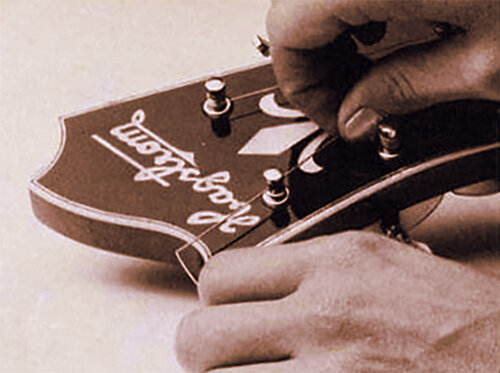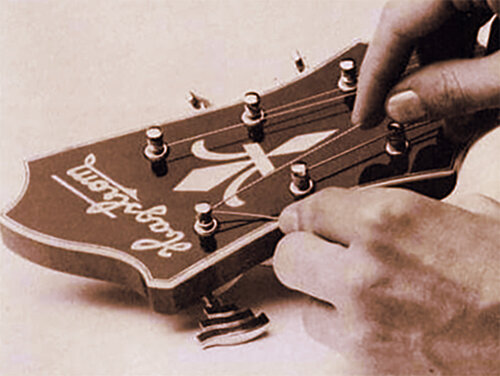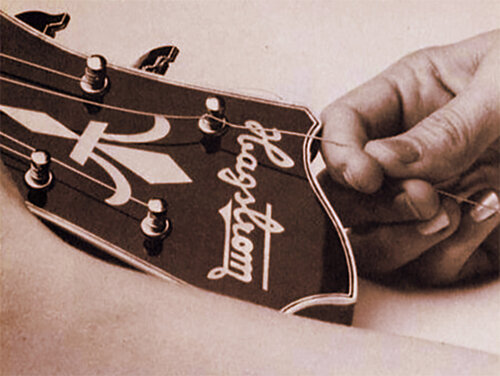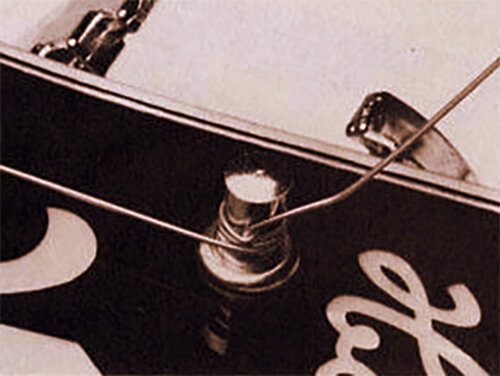How to re-string your guitar at the Tailpiece
Simply insert each string through the proper hole in the tailpiece. The “Ball end” of the string will hold it in place.

At the Neck
Bring each string up the neck and make a 90-degree bend in the end about 2 inches beyond the proper tuning machine. Insert the string into the hole of the string post. Wind the end of the string halfway around the post and under the attached string. The end of the string is then bent back over the attached string to prevent slippage.
The string windings should be close to the base of the post. The string should be wound around the shaft about three times. Bring the string up to pitch before clipping the end.



